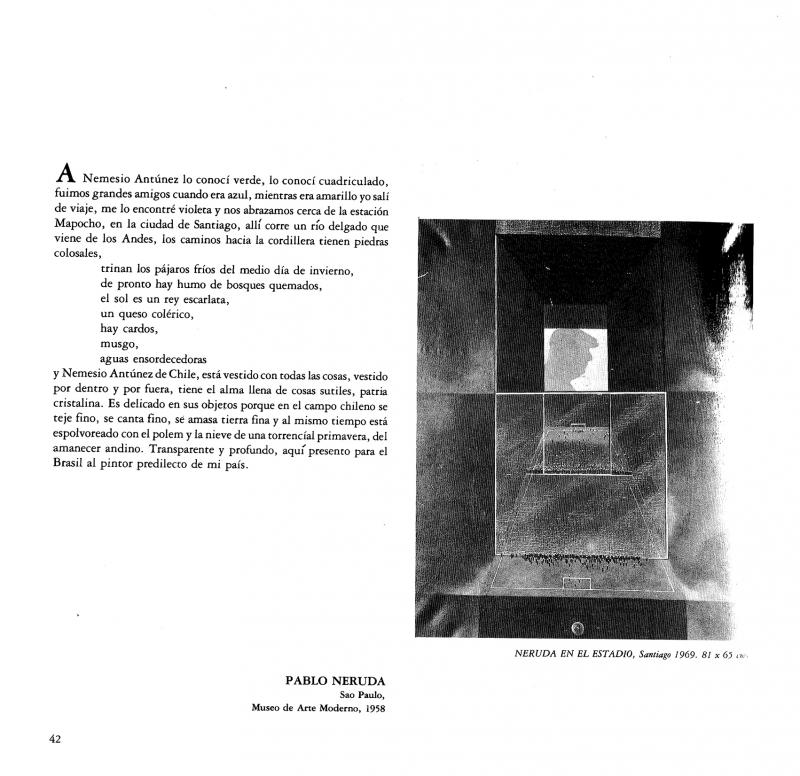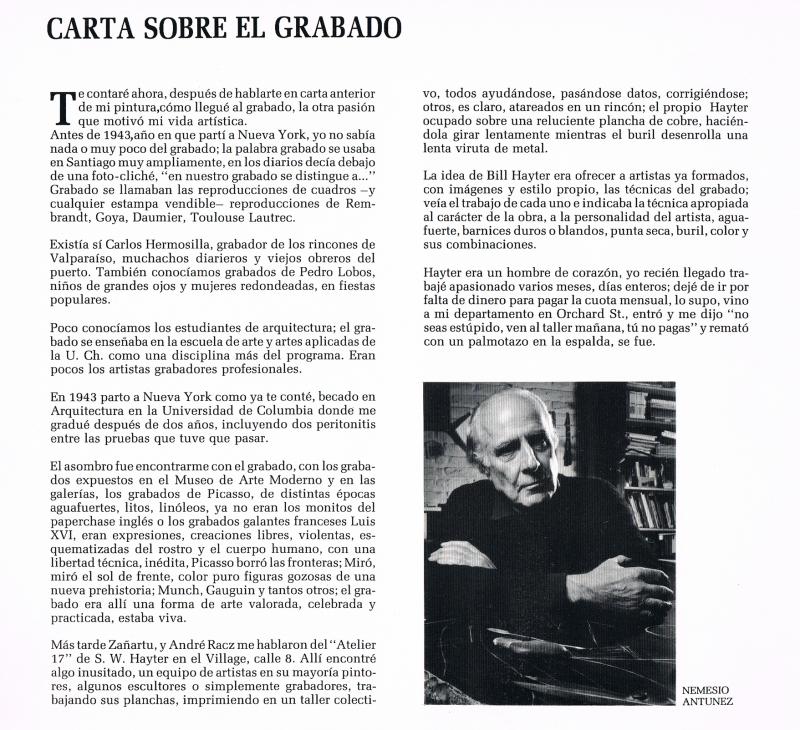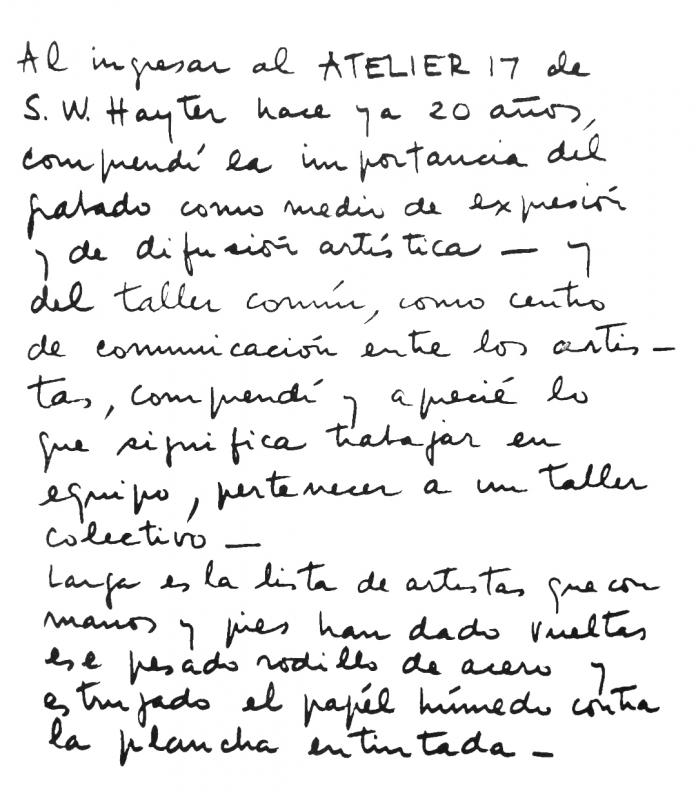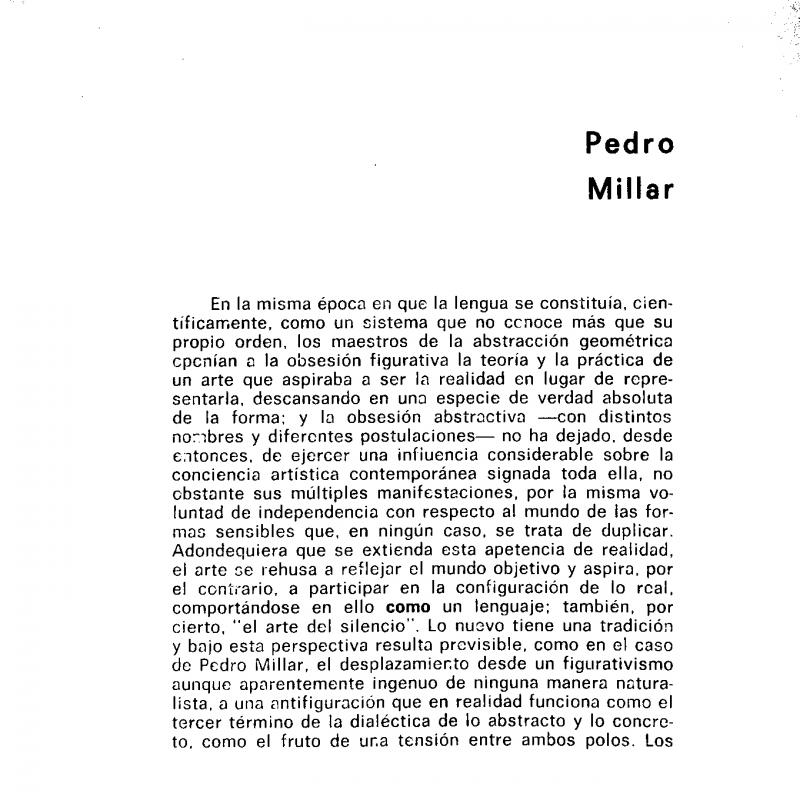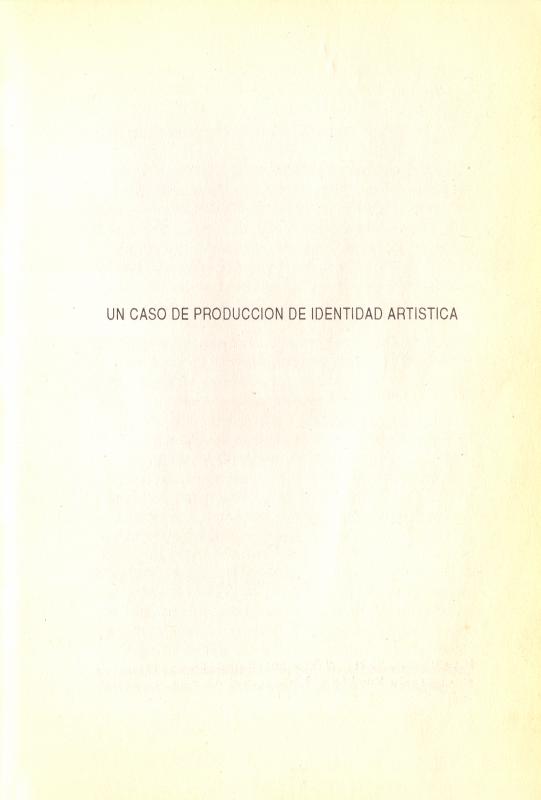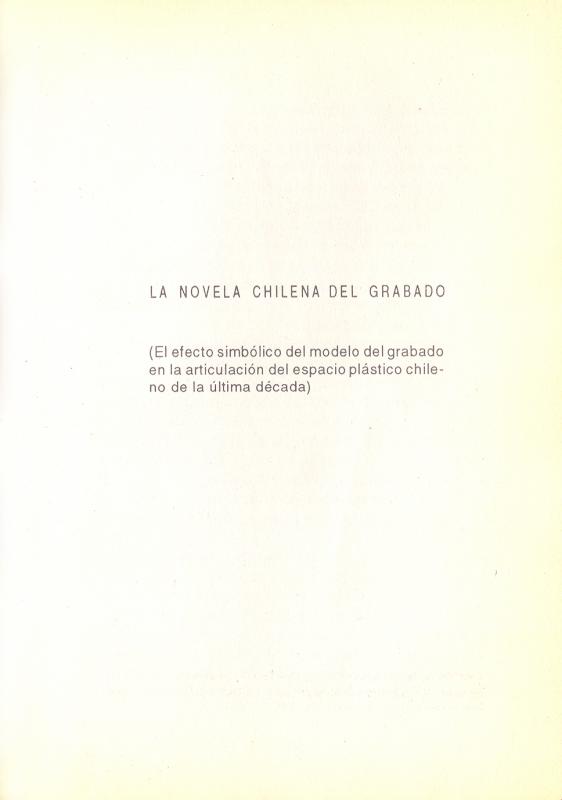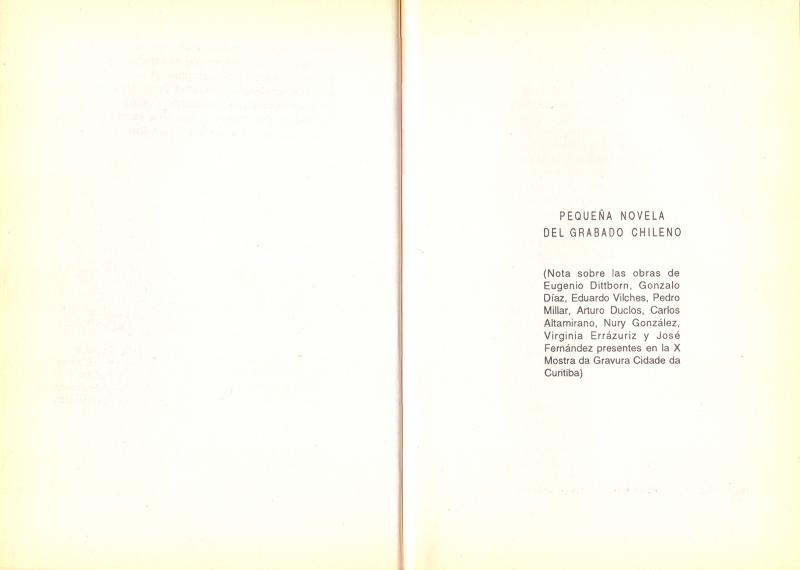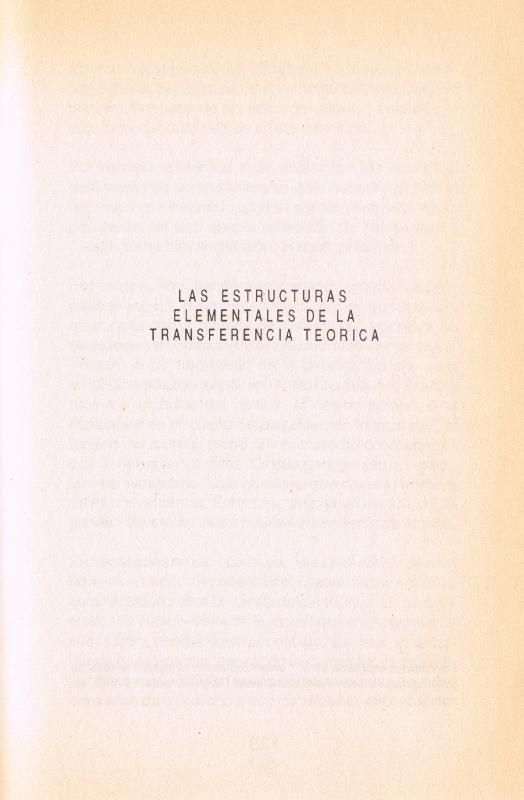The printmaker Pedro Millar (1930–2014) interviews Nemesio Antúnez (1918–1993). They were both members of the Taller 99 and played important roles in the evolution of printmaking in Chile. Antúnez’s career is outlined in the text of the interview. Millar, for his part, was a key figure in the printmaking instruction provided at the Escuela de Arte de la Pontificia Universidad Católica de Chile. He began his art studies at the Universidad de Concepción, like the printmakers Eduardo Vilches (b. 1932) and Jaime Cruz (b. 1934), who also started teaching printmaking classes at the Universidad Católica in the 1960s. [See the following in the ICAA Digital Archive: “A Nemesio Antúnez” (doc. no. 769758) written by Pablo Neruda.]
In an interview with Emilio Ellena, on the occasion of an exhibition at the Galería Cromo, Millar admitted that two of the major events in his printmaking career were the realization that original works could be duplicated and his membership in the Taller 99, which he described as a community that welcomed those who wished to work freely. Ellena, in turn, noted Millar’s ability to renew this technique. One of this printmaking movement’s defining traits was its willingness to consider the possibilities for producing and organizing initiatives (such as the Bienal Americana de Grabado, among others). As regards the essays, Jaime Cruz wrote both “Memoria fracturada del grabado chileno” (doc. no. 767023), which presents a brief history, and “La memoria del grabador” (doc. no. 767012), the introduction to his 1994 retrospective. Antúnez, for his part, published “Carta sobre el grabado” (doc. no. 749419) and “Taller 99” (doc. no. 745065), both of which discuss his role as a promoter and an artist. [On the subject of Millar’s art, see “Pedro Millar” (doc. no. 767093) by Enrique Lihn.]
Something else to consider about printmaking is that the art critic and curator Justo Pastor Mellado (b. 1949), in his book Novela chilena del grabado (Chilean Novel about Printmaking, 1995), suggests a historiographic view of Chilean art that places printmaking at the heart of the field. [Regarding the essays in this book, see: “Un caso de producción de identidad artística” (doc. no. 736039), “La novela chilena del grabado” (doc. no. 736035), “Pequeña novela del grabado chileno” (doc. no. 736031), and “Las estructuras elementales de la transferencia” (doc. no. 736043).]

